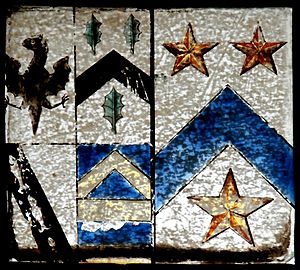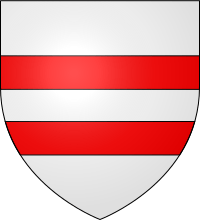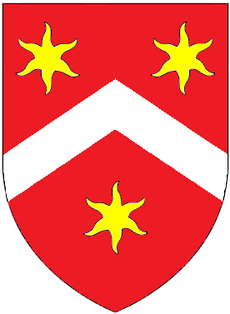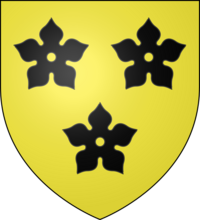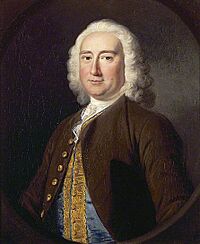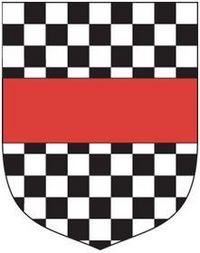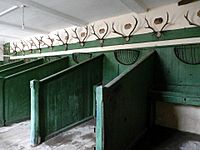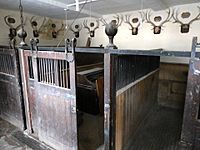Descent of Holnicote facts for kids
The Holnicote Estate in Somerset, England, has a long and interesting history, with many families owning it over the centuries. This story tells you about how the estate changed hands, from ancient times to when it was given to the National Trust.
Contents
Domesday Book

The Domesday Book is a famous record from 1086, ordered by King William the Conqueror. It listed all the land and property in England. The book shows that HONECOTE (which is Holnicote) was held directly from the King by two nuns. They held it through a special type of land ownership called "frankalmoin," which meant they held the land in return for prayers and good deeds, rather than military service.
de Holne Family
During the time of King Edward I (1272–1307), a person named William de Holne owned the manor. A part of the estate was held by Walter Barun. This part had a very unusual duty attached to it: the owner had to hang red deer that died of disease in Exmoor Forest on a special forked piece of wood. They also had to provide food and lodging for poor or elderly people who came to them. This was done for the souls of King Edward I's ancestors.
The de Holne family had a special coat of arms that showed three holly leaves. This is called "canting arms" because the holly leaves (holne) sound like their family name. You can still see these holly leaves in a stained glass window at Holnicote today.
Staynings Family

The Staynings family later owned Holnicote. A memorial for Charles Staynings (1622–1700) can be found in Selworthy Church. It includes a poem he wanted written about himself and his wife, Susanna Martyn:
- "Here lyes Charles Staynings by his wife,
- Who loved him as she did her lyfe,
- As hee did her their loves increased,
- Till that sad day his wife deceased.
- To whom her husband now is gone,
- Both lived together thirty years and one."
The memorial also shows the Staynings family's coat of arms, combined with the Martyn family's arms. Susanna Martyn was the daughter of Sir Nicholas Martyn, who was a Member of Parliament (MP) for Devon and a Sheriff of Devon.
Martyn Family
The Martyn family, who were important feudal barons of Barnstaple in the past, also had a connection to Holnicote. William Martyn (1680–1710) was Susanna Martyn's great-nephew. He married a woman also named Susannah.
Their son, William Clifford Martyn (1706–1770), later owned the estate. He had no children, so when he died, the estate passed to his cousin, Nicholas Tripe. Nicholas's son, Rev John Swete, became a well-known expert on landscaping and a writer about Devon.
Blackford Family
The Blackford family then bought Holnicote. William I Blackford (died 1728), who was a Master in Chancery (a legal official), bought the estate from William Martyn. He also bought other lands nearby, including the manor of Bossington. He was buried at Selworthy.
His son, William II Blackford (1693–1730), inherited Holnicote. He married Henrietta Collet, whose father was an important officer in the East India Company. A memorial for William and Henrietta is in Selworthy Church. It mentions that Henrietta died young, at 23, and their only daughter, Henrietta Blackford, died as a child at age seven.
Because young Henrietta died so young, the estate passed to her cousin, Elizabeth Blackford.
Dyke Family
The Dyke family then took over Holnicote. John Dyke (died 1732) was the owner, but he had no children. So, his brother, Edward II Dyke (died 1746), inherited the estate.
Edward II Dyke was important in the area. He was the warden of the royal forest of Exmoor and the Master of Staghounds, meaning he was in charge of the deer hunting. He married Margaret Trevelyan. Edward also had no children. He left Holnicote and other estates to his niece, Elizabeth Dyke. He made a special rule that Elizabeth and her husband, Sir Thomas Dyke Acland, 7th Baronet, should add "Dyke" to their last name.
Acland Family
The Acland family came from Devon and have a long history, possibly moving to England from Flanders after the Norman Conquest in 1066. They later moved their main home to Killerton, where they built a large country house.
The Holnicote estate became part of the Acland family when Sir Thomas Dyke Acland, 7th Baronet (1722–1785) married Elizabeth Dyke, the heiress of Holnicote. Sir Thomas was a Member of Parliament for Devon and Somerset. He was also a very famous staghunter and kept his own pack of hounds. He was known for his generous hospitality at Holnicote and his other estate, Pixton, welcoming all riders during hunting season.
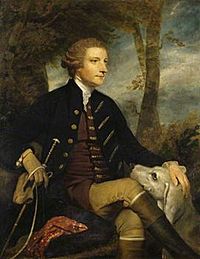
In 1779, a fire destroyed the house at Holnicote. Sir Thomas was very sad about losing his collection of stag heads and antlers in the fire.
The estate then passed down through the Acland family:
- Sir John Dyke Acland, 8th Baronet (1778–1785), his grandson, who died young.
- Sir Thomas Dyke Acland, 9th Baronet (1752–1794), his uncle. Like his father, he was known as "Sir Thomas his Honour." He loved staghunting and continued his father's tradition. He lived mostly at Holnicote and Highercombe, near Exmoor, which was famous for its red deer. He killed many stags, and their heads are still displayed in the stables at Holnicote.
- Sir Thomas Dyke Acland, 10th Baronet (1787–1871), his son, known as "The Great Sir Thomas." He changed the family's focus from hunting to politics and helping others. He was a Member of Parliament for many years.
- Sir Thomas Dyke Acland, 11th Baronet (1809–1898), his son.
- Sir (Charles) Thomas Dyke Acland, 12th Baronet (1842–1919), his son.
- Sir Arthur Herbert Dyke Acland, 13th Baronet (1847–1926), his brother.
- Sir Francis Dyke Acland, 14th Baronet (1874–1939), his son.
- Sir Richard Dyke Acland, 15th Baronet (1906–1990), his son. In February 1944, Sir Richard made a huge donation: he gave both the Holnicote and Killerton Estates to the National Trust. This was the largest donation the National Trust had ever received, covering about 16,000 acres.


